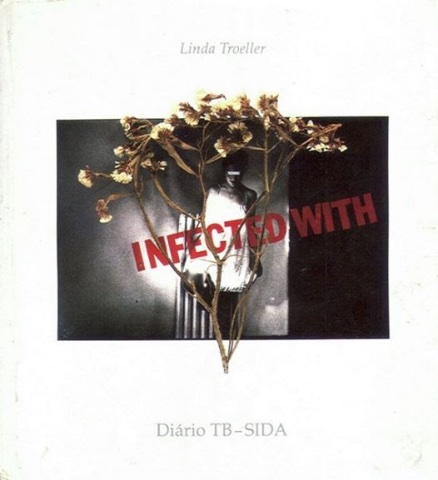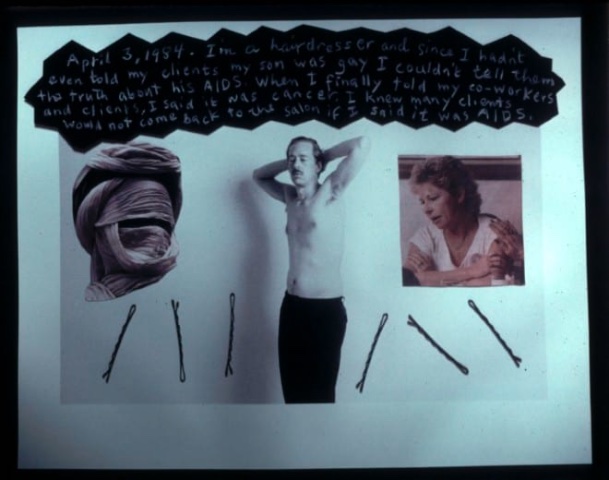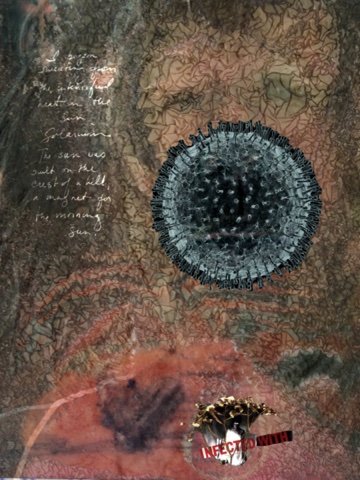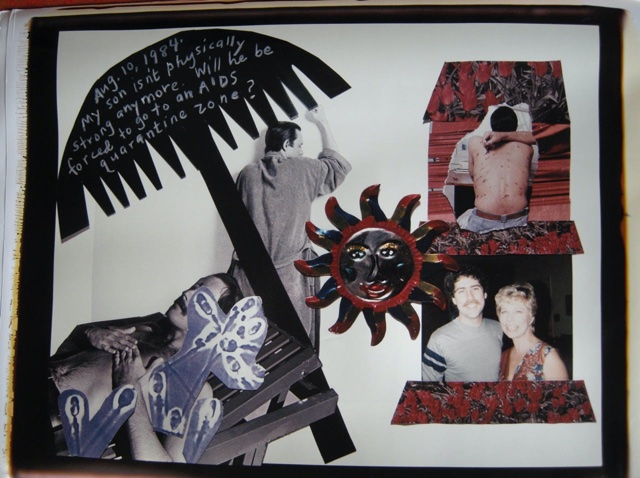Art for TB-Aids Then. Covid-19 Now
Linda Troeller Creates Inspired Pandemic Art Again
By: Jessica Robinson - May 29, 2020
TB-Aids Then. Covid-19 Now Part I
Linda Troeller creates pandemic-inspired art-- again.
Pandemics have been part of Linda Troeller’s artistic vocabulary since she shot to international recognition in the 1990s with her series of photocollages titled TB-AIDS Diary. Twenty unsettling images addressed issues of stigma by comparing patients with Tuberculosis in the 1930s to patients with HIV in the 1990s.
“That project really came from the heart,” says Troeller. “My mother was in a TB sanitarium. At that time TB was referred to as the ‘white plague,’ so people were stigmatized by it. My father was advised to reconsider his plan of marrying her.”
The TB-AIDS Diary is made up of over-lapping images, personal artifacts and two diaries, one kept by Linda’s mother, and the other, the mother of an AIDS patient.
Two mothers, decades apart, suffering the deadliest pandemic of their time.
In the text of one image the mother writes: “My son is not strong any more, will he be forced to go into an AIDS quarantine zone?”
An image of Linda’s mother is branded Infected With.
The TB-AIDS exhibition opened in 1994 in the Havana Biennial. “Cubans knocked on my hotel door in the middle of the night asking if I might help them make contact with Castro’s government. At the time, all Cubans infected with HIV were in quarantine. Through my art connections I was able to arrange for community leaders to assist in their quest to visit ‘hidden’ relatives.”
The Diary traveled to Italy, Finland, Germany, France, Denmark and throughout the US. Photos from the Diary were published in magazines from Switzerland to Russia, from Spain to Canada.
Whenever and wherever the emotionally powerful images and thought-provoking text were exhibited, they grabbed the attention of newspapers and magazines.
When an interview with Troeller, and photos from the Diary, were published in Helsinki’s major newspaper, Helsingin Sanomat, (Helsinki Times) it created a groundswell of public opinion. The opening paragraph read, “AIDS is a political disease. Just like TB in the 30s, AIDS has become a stigma of isolation and hostility in the 80s.”
Full-page ads for the exhibition appeared almost daily.
The deluge of press soon put pressure on Finland’s government to stop stamping “HIV” in the passports of infected people!
The TB-AIDS Diary delivered a message by creatively assigning interaction between the present and the past, both verbally and visually.
In the context of Covid-19, the TB images in the Diary may seem like historical artifacts, but, according to the World Health Organization, “every year 10 million people fall ill with tuberculosis, making it the world’s top infectious killer.
In the context of today’s Covid-19, Troeller’s TB-AIDS virus references seem prescient.
“Now we have a new virus attacking the entire world, not only gay and blood infiltrated people,” said Troeller.
With the Diary, Troeller was influenced by the societal reaction to people who were infected with TB and AIDS. The visual starting point in the AIDS section of the Diary came when she read a newspaper article about hospital workers leaving the trays of people infected with AIDS in the hallways, unattended to.
It reminded her of how stigmatized her Mother had been after she had recovered from TB.
Now, with Covid-19 we have a new pandemic but an old vocabulary: isolation, fear, contagion, stigma.
The past connects to the present.
Yet this time Troeller’s focus is even more personal. In creating her new pandemic art, she suddenly realized she was no longer researching a pandemic from a safe distance, she was actually living through one. For sure, a surreal moment.
How does an artist maintain their creative sanity in these surreal times?
As Troeller’s most celebrated work was about contagious diseases, I wanted to know how she is connecting her pandemic art of the past, to the Covid of now.
I phoned her in her New Jersey home where she and her husband are sheltering in place. “My art investigation is now focused on aging, death, disease and survival as Covid-19 is robbing us and teaching us,” said Troeller. “When I created the TB-AIDS Diary, those viruses were more abstract to me. But today I have a new and more terrifying relationship to contagious diseases. The TB-AIDS Diary in a way has a revival of its original purpose. TB was a metaphor for the stigma surrounding contagious diseases. Now, sadly, with Covid comes yet again stigma.”
“Making art that responds to what is happening now is helping me refocus my attention away from the existential fear, not just in the creating of the object, but in the rebuilding of myself.”
In the new work she is integrating science with art, using microscopic patterns and visual effects that demonstrate both the beauty and the nightmare of nature’s phenomena. She is witnessing history and documenting it in real time.
The first photo she sent me from her new series is titled Pandemic Blues. It shows a woman’s face hidden behind a blue microscopic image containing crown-like spikes on the surface, (thus the virus’s family name, ‘crown.’)
“When I was the assistant to the painter/photographer David Hockney at the Ansel Adams Workshops in California, he encouraged me to use symbols that spoke of the hidden. The hidden woman in the cracked surface represents all the new and additional disruptions in life with Covid.”
That woman is the artist herself, camouflaged behind the viral mask. For me, the photo speaks of Troeller’s struggle to endure and resist the epidemic unfolding around her.
“The lower left area represents a heart beating to survive this horrid influence, while next to it was my TB-AIDS Diary image that was printed as a wake- up symbol to say that women could get AIDS, too, not just men.
In relationship to Covid-19, now we all can be ‘Infected with.”
Yes, indeed, “we can all be infected with.”
The coronavirus has no borders. The global situation is still a big unknown, social distancing is here for the duration.
In the second photograph, called Virus-3, there is a dizzying swirl of text and color, of cells interacting and colliding with one another, as if all the pandemics of the past and present were everywhere at once, just as Covid is everywhere.
There is no place to hide. No way to view it from a safe distance.
Living in the viral moment Linda Troeller has found a new language with which to create art in the midst of destruction.
“We are all asked to dream forward,” says Troeller. “We have new imprints in us, and will find unique ways to explore these spells.” (Courtesy Jessica Robinson)





